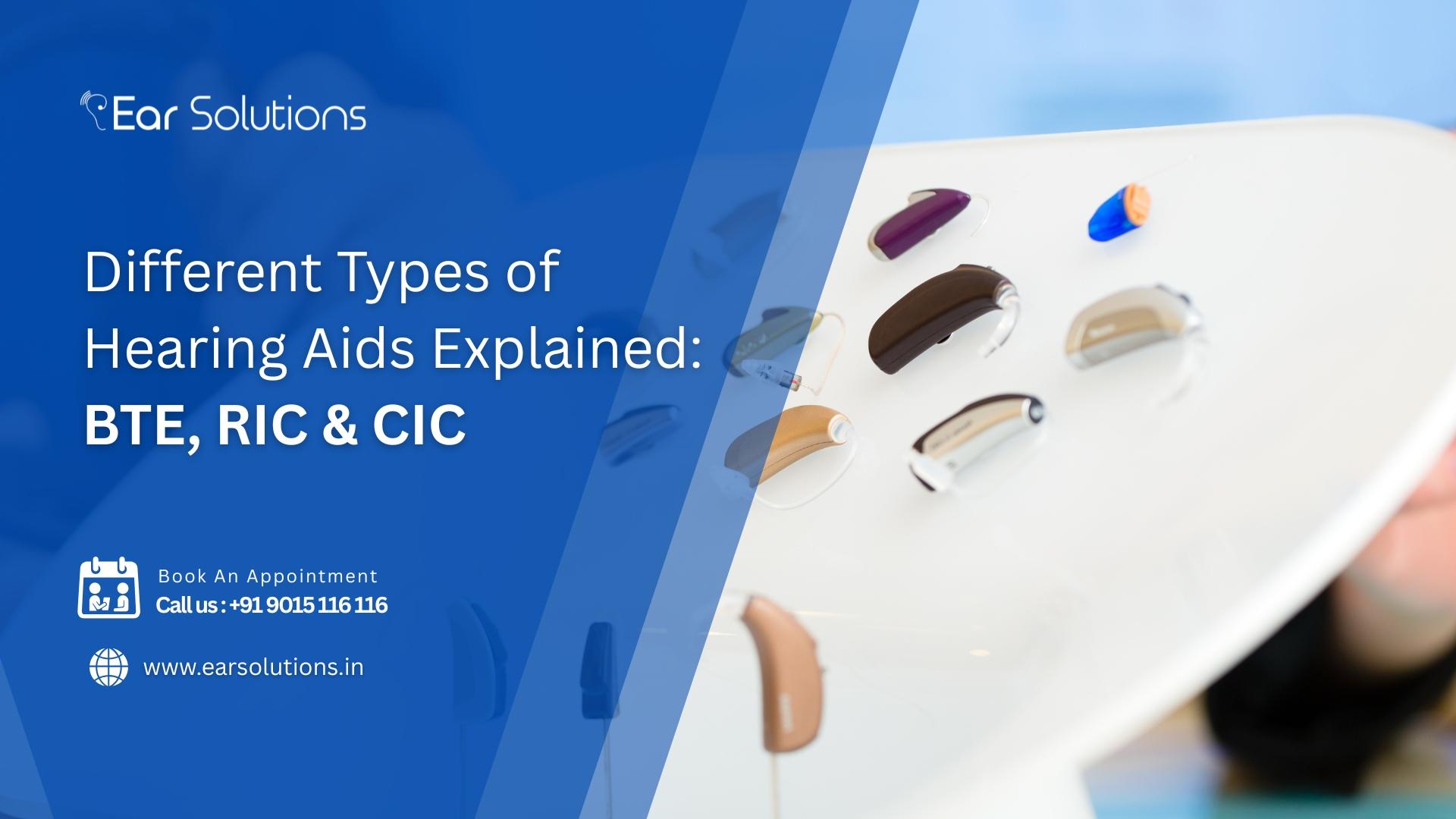Choosing the right hearing aid is essential for improving hearing clarity and enhancing day-to-day life. With advancements in hearing technology, a wide variety of styles are available, each tailored to specific hearing needs and personal preferences. Among the most popular and widely used are BTE (Behind-the-Ear), RIC (Receiver-in-Canal), and CIC (Completely-in-Canal) hearing aids. In this article, we’ll break down each type to help you better understand which might be best for you.
1. Behind-the-Ear (BTE) Hearing Aids
BTE hearing aids are one of the most traditional and commonly used types. As the name suggests, the main part of the device sits behind the ear and connects to an earmold inside the ear canal via a thin tube.
Key Features:
- Suitable for all degrees of hearing loss, from mild to profound.
- Larger size allows for longer battery life and more powerful features.
- Easier to handle and maintain, making it ideal for children and elderly users.
- Often comes with directional microphones, telecoils, and Bluetooth connectivity.
Advantages of BTE Hearing Aids:
BTE models are durable, offer strong sound amplification, and are less prone to damage from earwax or moisture since the receiver is not inside the ear canal.
2. Receiver-in-Canal (RIC) Hearing Aids
RIC hearing aids are a more modern and discreet variation of BTE devices. While they still sit behind the ear, the receiver (or speaker) is placed inside the ear canal, connected by a thin wire rather than a tube.
Key Features:
- Suitable for mild to severe hearing loss.
- Sleek, lightweight, and more discreet than traditional BTE models.
- Better sound quality due to the placement of the receiver directly in the ear.
- Commonly include features like rechargeable batteries and wireless streaming.
Advantages of RIC Hearing Aids:
RIC hearing aids offer a more natural sound and are less visible than BTE styles. Their design also allows for easy replacement of the receiver if needed, making maintenance simpler.
3. Completely-in-Canal (CIC) Hearing Aids
CIC hearing aids are designed to fit entirely inside the ear canal, making them nearly invisible to others. These are custom-molded to fit the unique shape of your ear canal.
Key Features:
- Best for mild to moderate hearing loss.
- Extremely discreet and cosmetically appealing.
- Usually not compatible with wireless features due to their small size.
Advantages of CIC Hearing Aids:
Perfect for individuals seeking an almost invisible solution, CIC devices provide basic amplification and comfort. However, their tiny size may not suit those who want advanced features like Bluetooth streaming or rechargeable batteries.
Choosing the Right Type
When selecting a hearing aid, it’s important to consider your level of hearing loss, lifestyle needs, and personal comfort. While BTE aids offer power and versatility, RICs provide a balance of performance and aesthetics, and CICs are ideal for discreet use.
A professional audiologist can help guide you through the decision-making process, ensuring the chosen hearing aid matches your hearing profile and daily needs.
Conclusion
Understanding the differences between BTE, RIC, and CIC hearing aids is the first step toward better hearing health. Each style has its unique advantages, and with expert guidance, you can find the perfect hearing aid that fits seamlessly into your life.


